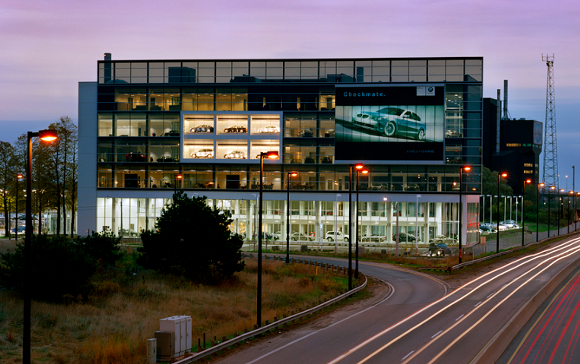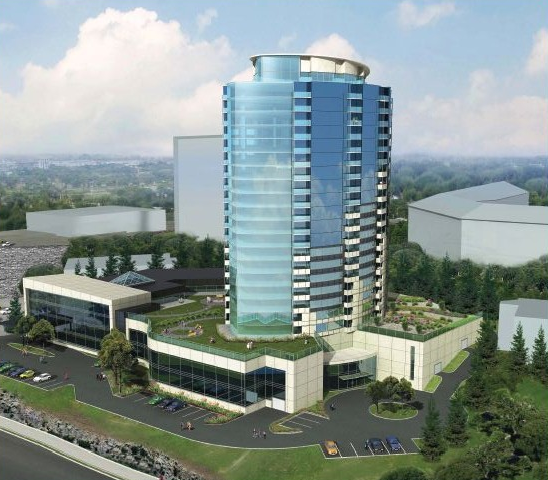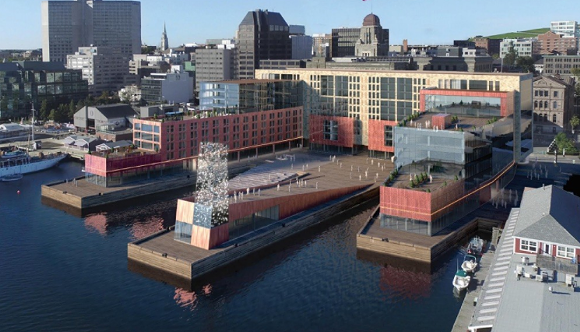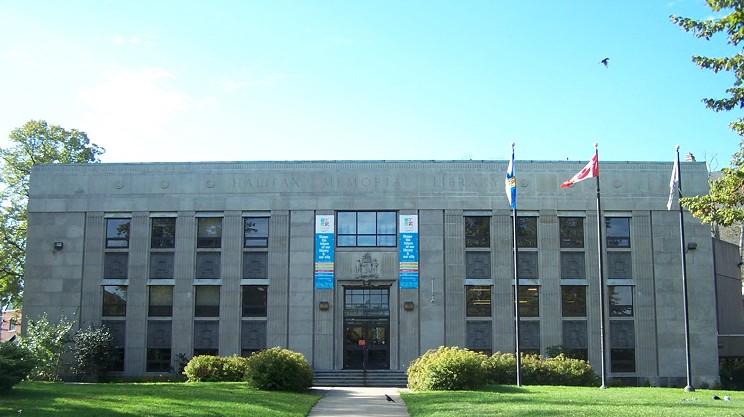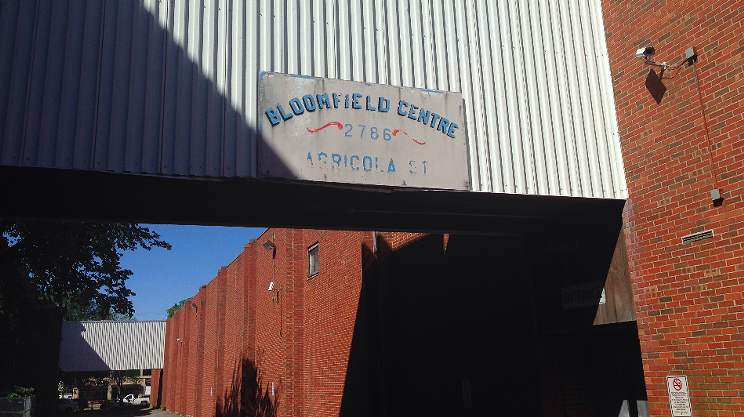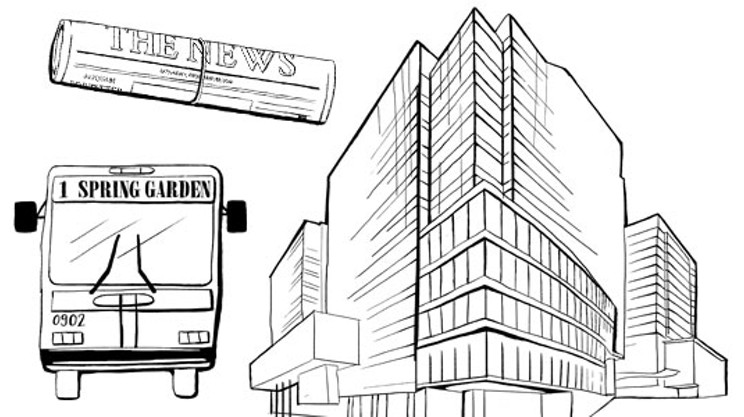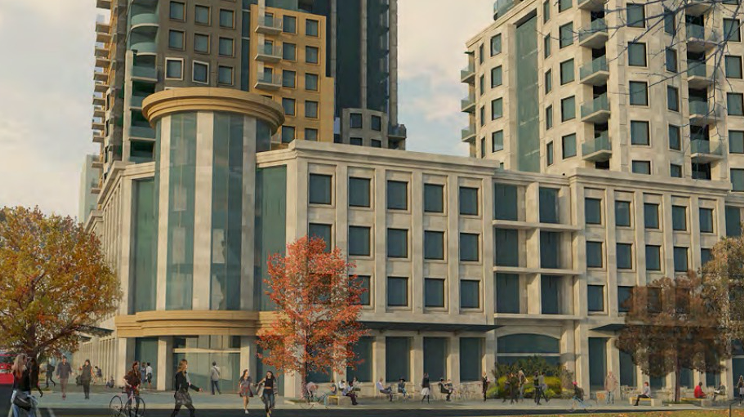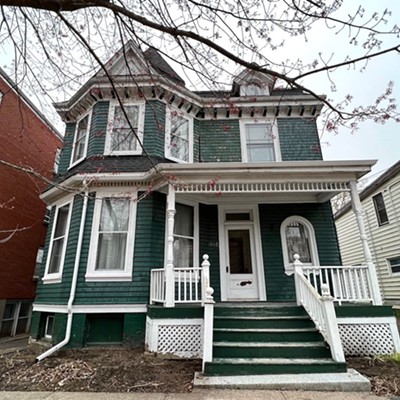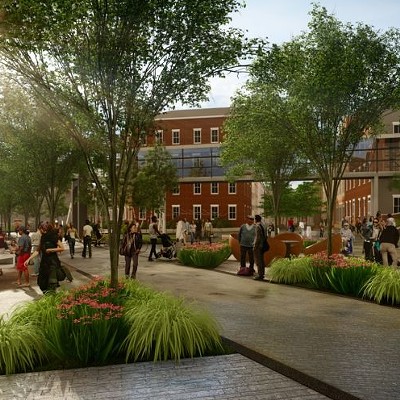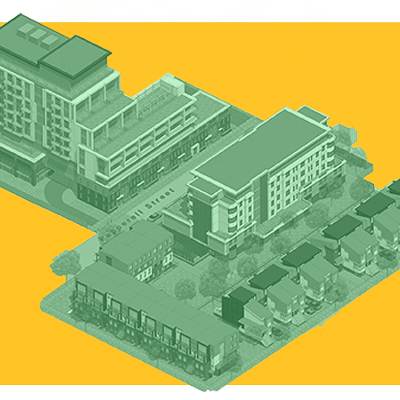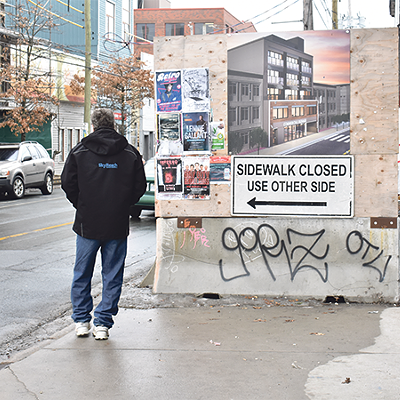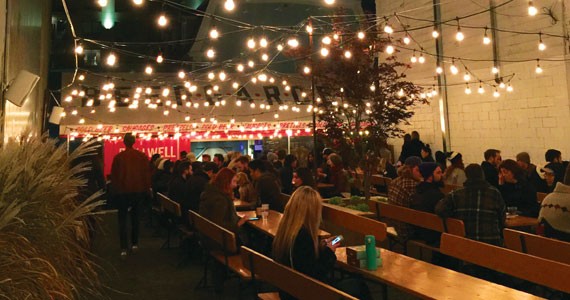
Halifax’s building boom has been loud enough this year to deserve sending two Christmas trees to Boston. From Queen’s Marque to King’s Wharf, and Young Avenue to Homes Not Hondas, there’s been no shortage of properties being torn down and bold designs being brought forward in 2016. Which is why The Coast gathered three wise urban design experts together at our offices to reflect upon the spectre of developments past, present and yet-to-come. Stephen Archibald, Peggy Cameron and Peter Ziobrowski had a lot to say on the subject. Their answers have been condensed below, and edited for style.

The best thing built in Halifax this year?
Archibald: The library should get the award every year until something else is built.
Ziobrowski: We’re 2016, going into 2017, and a building that was built three years ago is still the best thing that’s ever been built in Halifax in recent memory.
Cameron: I think it says something about lack of imagination of architectural firms here. That building is so beautiful and it was so inexpensive—$52 million dollars. And something that people will not say—but here it is—it conformed with every regulation. So we can have beauty, we can have public approval and we can respect regulations.
The city’s biggest problems?
Z: The Mary-Ann, across from the new library, is just a disaster, in terms of the cladding on the facade. It's like they bought end-of-lots for every material and that's why there's so many of them.
C: A lot of this over-dramatization of the presentation needs to be corrected. One of the big ways the city could be aiding the public to understand things is if they had 3D models. We really need it for the new Centre Plan. It's not that expensive. It's all CAD.
A: The idea of saying “Yes we're going to have a vibrant street.” You have to have a vibrant community for that to work. We know that just doesn't happen. There just aren't that many young entrepreneurs that want to fail. For me, a brilliant example is the Trillium. That's not new, but they somehow managed to put in independent businesses and extended a business district down along a park area with wide sidewalks and a nice urban feel to it. That's the only building with business on the ground level that I can think of. The worst examples of that are things like the Royal Bank Centre, where you save the facades and there's absolutely no attempt to do anything that gives it curb appeal.
Z: They lease the whole space as the bank branch.
A: I think that's the big lie of Barrington Street, that you're going to end up with lots of shopfronts.
C: We don't have to extend to Barrington Street. There's an extant example on Market Street because all the retail spaces along the ground floor of those new buildings are empty. The case you point out about the success of the Trillium, that developer successfully created a retail space at a ground level by poaching existing businesses that were in other locations around the corner. Some of them were out of Park Lane. It's a problem that we're probably overbuilding. It wasn't the heritage people who stopped development after the ‘80s, it was that we overbuilt in the ‘70s and ‘80s and we didn't have any more development happen. This is the history of real estate. It goes in a boom-and-bust cycle. Right now there's a fluidity of cash, capital and low interest rates around the world and Halifax has finally gotten discovered.
A: One of the greatest threats I can imagine is the loss of the art college on Granville Street. If I was the city or the province or whatever, I would be putting whatever effort I could to be saying “What is it we can do to make it possible for you to stay in this location?” That's something that kept that block together. The idea of having a downtown university, cities all over the world just die for that.
Z: Queen’s Marque will be the next building people are talking about. This middle part on the pier I think is stupid. They should get rid of it. The ramp with the light-up tower is just the dumbest thing ever.
C: Why is that? Why don't you like it?
Z: I don't know. Honestly, it just rubs me the wrong way. I think the space in here, everyone's freaking out about this 40-foot passage, but if you actually space out it's not any narrower than the boardwalk is now. They should be able to do some interesting programming with that space.
A: Another building that I irrationally kind of hate is Icon Bay, the big round thing across from the Fairview Terminal. In demonstrating the kind of absolute lack of imagination, it was open on Doors Open, so I went there and we were kind of standing to go on the freight elevator to go up to the model suites and I asked “Why is it called Icon Bay?” Looking out at the bay, I thought, maybe the Icon had sank there or something. The guy pointed down to somebody and said “See that guy, leaning against the SUV? He was in Miami and there was a new development there called Icon Bay and he thought ‘That's a great name.’”
C: One of the things with Icon Bay is what we're looking at here is all happening in advance of the Centre Plan, so it's pre-empting what the outcome of the Centre Plan will be. Not only that, but we're not looking at real growth scenarios around in-fill or vacant land or repurposing existing buildings. We're not curtailing any of the development that's happening outside of the regional centre. The next thing you raised—where the hell do they get these names? You can't even tell one name from another.
A: I like “The Vüze.”
Z: That's Fenwick Tower.
C: They should just number them. When you start saying "Where are The Vüze?" It's such a distortion of something. To start pulling these names out of a hat based on a fad that's one syllable seems like it sort of says something about the style of architecture too.
Homes Not Hondas
A: For me, it was an interesting contrast because it was happening at the same time as Save Young Avenue—being two very different locations.
Z: My agitation about Honda is not that there's a dealership in downtown Halifax, or that they want to expand—it's that they're doing it in such a crummy way. There are so many good examples of urban format dealerships that come to the street. There's a BMW dealership in Toronto, just off the Don Valley. It's six stories. The cars are displayed like they're Hot Wheels on the shelf of a toy store.
C: When I first moved to Halifax in 1991, O'Regans was doing exactly the same thing in that neighbourhood. They tore down eight Victorian row houses and left one building standing at the corner until eventually they built around that. There's no criteria for when the city does issue development permits. When they get asked “Why can't you stop this?” They say “We don't have responsibility. It's the province.” It works for them, because then they don't have a real way to stop developers doing what they do.
A: I did like the irony that the same moment they were tearing down those buildings, they were tearing down what had been an urban car dealership at [the former CBC radio building] that did have an elevator to the roof where cars were stored and show windows.
This year’s best success stories?
Z: The Dillon is a great building, at the corner of Market and Sackville. They're basically preserving the entire building. The developer of it is trying to preserve the interior. You can literally walk by that site, and if [Giannoulis] is there, he'll take you through. He's very proud of that.
A: Common Roots, which is not brand new, but seemed to me finally this year came into incredible presence. That's my high school, QEH, under that rubble, and I thought the urban farm thing was a stupid idea because I had no idea what it was you could be doing there. Visiting it when there's an event on, you realize the spirit, the energy that can go into a vacant lot. One of the other things I thought was a brilliant success this year was the anti-building of Stillwell on Spring Garden Road. You took a space with absolutely no energy—it was a fence—and you built a non-building.
Z: That was brilliant. It's by far one of the best drinking establishments I've ever drank at.
A: It made us discover a space that didn't exist. There is real hope. You look at this and say, are there any of these [potential developments] that get me as excited as Stillwell?
C: That’s true.
A: I don't know how to tell a story about these [proposed] buildings yet. They feel foreign....
Z: They could exist in Ottawa.
C: Almost what you’re describing is something that’s more organic. A Stillwell space is creating an idea of what works in an existing space. A lot of these [larger developments] feel like they're artificial concepts that are not part of our aesthetic. They’re not part of our place. Probably they’re not even necessary. These are not placed in a place where you feel they do something with that place other than stand out, or look big. The word I hear a lot is, they don't seem authentic.
A: A commercial space that I haven’t used but like walking through is the new food court at the Halifax Shopping Centre.
C: Are there people there? Is it busy?
A: It’s absolutely filled! There’s nothing you’d ever want to eat, but in terms of a destination to visit it’s an interesting public space. The other thing, if Halifax hates one thing it's when Moncton gets something. But they're going to have really true, true hate once they realize that the best new bit of urban design in the province is in Truro, where they have the energy to tear down a centennial project—their own library—to repurpose a beautiful 1880s building and build a beautiful public square in front of that. We haven't repurposed a grand old building in town since, I don't know when. We've saved a facade or two.
C: I think that it's a missed opportunity that we're not doing more of that. If you look at Montreal, Ubisoft is in an old shoe factory in Montreal and that employs about 3,000 people. All of the place we could be doing that kind of repurposing or reimagining existing buildings is not even going to be possible. The idea of Ben's Bakery, that was something that you could have loft space, or incubator businesses...We're missing opportunities, and from a sustainability perspective, again if you look at the energy outputs if you repurpose a building you employ twice as many people and you take half as many materials.

